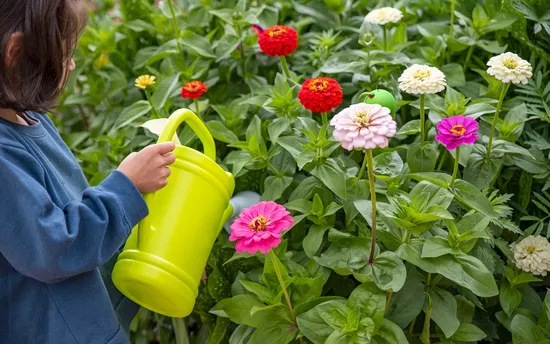Teaching future generations
How to be a plant-savvy parent
Kids love spending time in nature—whether it's playing in the garden, walking through the forest, camping under the stars, or even visiting the local garden centre. These everyday adventures are perfect for sparking curiosity and planting early seeds of awareness about plant health.
Start by helping your child understand that plants aren’t just pretty or useful; they’re essential. They give us delicious food, fresh air, shade and beautiful places to explore. But like people and animals, plants can get sick too. And when harmful pests or diseases arrive from outside the EU, our local plants struggle to fight them off.

Plant health begins in the community
As sustainability and climate concerns become a greater part of our daily conversations, gardening has never been more meaningful.
If your child’s school has a garden, why not offer to give a short presentation on the threats posed by imported pests and diseases? You can use the resources on this page or invite a local gardening expert to share their insights in a fun, hands-on way.
If your child’s school lacks a green space or access to natural surroundings, organize a day away in a park or forest with the parent’s group. Ask local authorities about volunteering opportunities for children, such as ridding parks of rubbish, or greening up public spaces with plants and flowers. Use these to create awareness of the importance of plants, and why it’s important to keep them free of pests and diseases.
The secret life of plants
For young children, nature is full of magic and wonder. Simple activities like “name that tree”, giving flowers personalities, engaging with tree ID apps, or making art from leaves and twigs help kids develop a deeper connection with their surroundings and a lifelong love for the natural world.
Become a Plant Protector.
Why should plant health matter to children? An easy way to explain this is because plants provide 80% of the food we eat.
Ask them to imagine a mealtime without their favourite fruits or vegetables. Also explain that plants and trees help clean our air by absorbing carbon dioxide. That’s why protecting them, especially from pests and diseases, is so important.
Encourage your child to become a Plant Protector. Teaching children not to fear bugs, but to observe and understand them, builds confidence and curiosity in green spaces.
Explain that tiny bugs and invisible germs can sometimes make plants sick, especially if they come from faraway places. Once here, they can spread quickly and harm our gardens, parks, and forests.
Give your child a mission: Look out for yellowing or spotty leaves, stems, or branches and if they see something unusual, tell a grown-up!

Help spread the word
Let your child’s imagination bloom with PESTY, a fun and creative resource that takes them on a garden-saving mission!
And don’t forget to share the message. On your social media posts and blogs, use the hashtag #PlantHealth4Life. You can also download ready-made social media posts from this page.




























